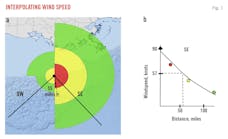Appalachian basin producers recommend shale operating standards
The Appalachian Shale Recommended Practices Group (ASRPG), a consortium of 11 of the Appalachian basin’s largest natural gas and oil producers, issued a set of recommended standards and practices for exploration and production of natural gas and oil from Appalachian shales.
ASRPG said its standards were consistent with the key recommendations of the US Secretary of Energy Advisory Board’s final report and the National Petroleum Council’s Prudent Development Report (OGJ Online, Sept. 16, 2011).
“As producers in the Appalachian basin, we strive to be responsible operators that conduct business in a transparent and sustainable manner, and openly communicate with stakeholders,” the consortium said.
The standards could affect Ordovician, Silurian, and Devonian formations and potentially other formations. ASRPG said evolving drilling and production technology is booting Appalachian regional economic opportunities and US energy security. “We also recognize it is essential for all operators to continuously improve and adopt effective practices as technology evolves,” the consortium said.
The ASRPG plans to submit its recommended standards and practices document to state regulators and legislators in the Appalachian basin, the Interstate Oil & Gas Compact Commission, the State Review of Oil & Natural Gas Environmental Regulations, and various producer organizations.
Companies belonging to ASRPG are Anadarko Petroleum Corp., Cabot Oil & Gas Corp., Chesapeake Energy Corp., Chevron Corp., EQT Corp., Seneca Resources Corp., Shell Oil Co., Southwestern Energy Co., Talisman Energy Inc., WPX Energy Inc., and XTO Energy Inc.
Standards outlined
The standards call for preoperational planning to provide communities with information and call upon operators to seek good landowner relations. Operators should evaluate potential water management options before the start of drilling, ASRPG said.
In additional, operators should consider use of alternative water sources and work with local water boards and other regulatory agencies to identify suitable water sources.
After potential wellpad sites are identified, operators should implement measures designed to reduce the operational footprint, ASRPG said.
In a series of site design and construction recommendations, the consortium said operators should prepare a regional spill and emergency response plan.
Operators also should identify the existence of coal mines or coal seams, depths of useable groundwater, and shallow oil and gas wells within 1,000 ft of the surface location before drilling, ASRPG said.
In selecting additives in hydraulic fracturing fluids, operators should strive to minimize the volume and concentration of additives listed on the Material Safety Data Sheet.
Operators should design water transfer systems and implement measures to test the integrity of all high-pressure surface equipment.
The process of initiating production should be designed to minimize releases of produced gases and contain produced liquids. ASRPG said operators should prepare a management plan addressing handling and managing of liquid hydrocarbons when operating in crude, condensate, or wet-gas areas.
Operators should use a corporate reporting standard, such as the International Petroleum Environmental Conservation Association, for reporting environmental performance metrics.
Contact Paula Dittrick at [email protected].

Paula Dittrick | Senior Staff Writer
Paula Dittrick has covered oil and gas from Houston for more than 20 years. Starting in May 2007, she developed a health, safety, and environment beat for Oil & Gas Journal. Dittrick is familiar with the industry’s financial aspects. She also monitors issues associated with carbon sequestration and renewable energy.
Dittrick joined OGJ in February 2001. Previously, she worked for Dow Jones and United Press International. She began writing about oil and gas as UPI’s West Texas bureau chief during the 1980s. She earned a Bachelor’s of Science degree in journalism from the University of Nebraska in 1974.
